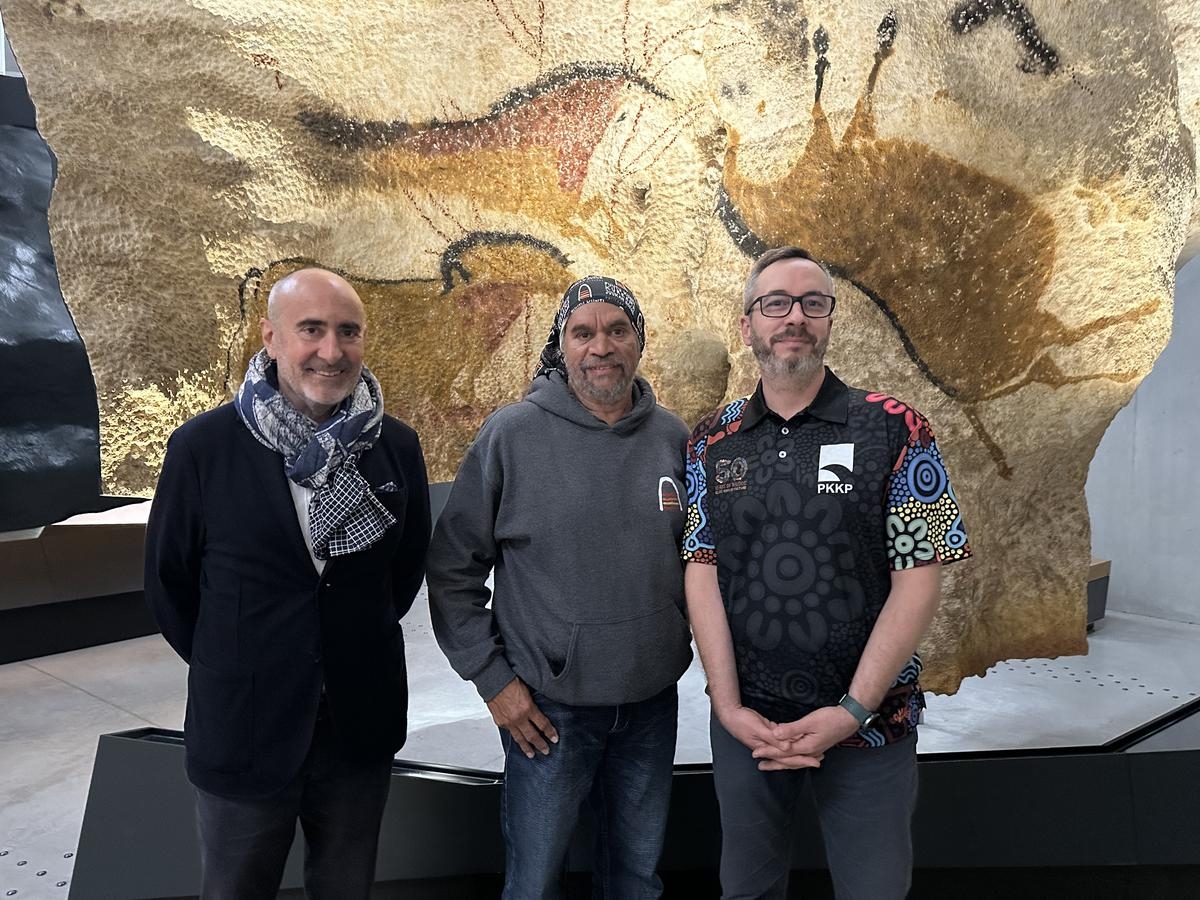Australian Aboriginal people draw inspiration from Lascaux IV to rebuild sacred cave

As part of a reconciliation process finalized by the reconstruction of a sacred cave dynamited in 2020 by a mining company, Australian Aborigines and their representatives came to discover French know-how in the manufacture of facsimiles
It was a destruction that had global repercussions and was compared to the Taliban's 2001 demolition of the Bamiyan Buddhas in Afghanistan. In 2020, Juukan Gorge, an archaeological site in Western Australia that had been occupied by humans for 46,000 years, was dynamited by iron ore producer Rio Tinto. A mining giant that was aiming to expand the exploitation of its existing deposit.
The disappearance of these prehistoric caves, one of the oldest sites occupied by Aboriginal people, had turned into a scandal despite its entirely legal nature: the government of this state rich in natural resources facilitating mining had approved the approach in 2013.
After the resignation of the multinational's leaders, swept away by the global impact that followed, the aboriginal people known as Puutu Kunti Kurrama and Pinikura People (PKKP) and Rio Tinto began a reconciliation process (without the local government) to regulate mining activities on this ancestral territory of 11,000 square kilometers, an area slightly larger than the Gironde department.
IdenticalA process that also involves the identical reconstruction of the 1,450-square-meter rock shelter on the site, an investment entirely funded by the Anglo-Australian multinational. It was within this framework that a delegation composed of representatives from PKKP, Rio Tinto, and CDM Studio—an Australian company specializing in the creation of facsimiles—traveled to France in mid-October. The objective: to successively discover replicas of the Chauvet Cave in Ardèche and Lascaux in Dordogne, after having previously considered visiting Alta Mira (Spain).
The cave was frequented as part of rites linked to "the transmission of customs for future generations."
"This destruction remains a trauma for our Aboriginal people, with the feeling of not having protected this heritage," said Burchell Hayes, spokesperson for the Aboriginal community, which has 207 members, upon leaving the tour of the facsimile. Measuring 30 meters long, 16 meters deep and around 12 meters high, the cave was used for rituals linked to "the transmission of customs for future generations."
A trip to Lascaux IV “very impressive, which echoes our own culture” adds Burchell Hayes, seduced by “the size of the building and the desire to combine education and tourism”.

PKKP AC
Unlike the prehistoric Sistine Chapel, the Juukan Gorge site, occupied for 46,000 years until the arrival of European settlers, did not contain rock paintings. "The ochre-based engravings that exist elsewhere in Australia depict activities ranging from hunting to ceremonial gatherings," says Denis Coutant, a Frenchman of Burgundian origin who is the heritage director for the PKKP Aboriginal Corporation.
“Made of ochre, these engravings represent activities ranging from hunting to ceremonial gatherings.”Secrets Revealed
Excavated for three and a half years by around fifteen archaeologists, Juukan Gorge is gradually revealing its secrets: "lithic objects, carved stones, bone objects have been discovered, as well as organic materials: leaves, grains, hearths used for cooking, fat extracts," continues Denis Coutant, for whom "Chauvet and Lascaux respond to two different visions with the use of distinct materials."

PKKP AC
Alongside him, Daniel Browne, a designer and owner of CDM Studio, met with the engineers who designed Lascaux IV with the aim of "finding the best ways to cast the replica" in a local environment swept by cyclones and overheated with temperatures approaching 50 degrees. This is why resin will be used sparingly in favor of concrete, a material with which "the collapsed rubble will be crushed and mixed," continues the designer, who will strive to reproduce the ochre color of the place.
The difficulty lies in the lack of photogrammetry and 3D data of the cave: there are only 134 photos of the site, from surveys carried out in 2007, as well as photos taken by the community or videos visible on YouTube or captured by drones.
"We recreated with software what these illustrations did not show," explains Daniel Browne, adding that he "used the uncut trees to make triangulation points."
Also present were emissaries from Rio Tinto who declined to comment publicly. The amount invested by the mining giant in this reconstruction is unknown. Neither is the delivery date of the reconstructed site, which, for the delegation, is second only to the reconstruction of Notre-Dame de Paris.
SudOuest





